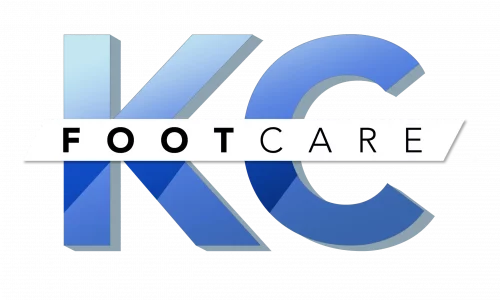Advanced Laser Treatment for Nail Fungus
Cutting Edge FDA-Cleared Cold Laser for Treatment of Nail Fungus
Nail Fungus Symptoms
Having a nail fungus is a major health issue, and in some cases, it can be very serious. There are a number of different types of nail fungus treatments available, and you may have heard about the Lunula laser treatment. These treatments can remove the nail fungus success is 89%. It takes the nail 9 to 12 months to grow totally out clear. The cost is $600 for one and $1000 for both feet treatment for up to a year if necessary.
* Nail are Yellow and hard to cut
* Thickening of the nail bed
* Nail is loose
Symptoms of onychomycosis include thickening, discoloration, separation, and loss of the nail bed. In addition, people may experience significant psychosocial problems due to the appearance of their finger or toe. Fortunately, there are treatments available.
Oral antifungal medication is typically used to treat onychomycosis. These drugs carry some medical risks and are also associated with drug interactions. Patients should be informed of this potential side effect.

Lunula Laser
Having a fungal nail infection can be embarrassing. But laser nail fungus treatment is not only safe, it is effective. A healthy newhealthy nail will begin to emerge in just a few months.
Fungal nail infections occur when pigmented yeasts form under the nail bed. The fungus then tries to seek out warm, dark places to grow. This results in a thickened nail, making it harder to care for.
Laser nail fungus treatment has been approved by the FDA for this condition. Using a laser, a beam of light passes through the nail bed, destroying the fungus.
The laser’s non-thermal effect causes the nail to heal. The laser also eliminates the need for oral anti-fungal medications.
The procedure requires no downtime and a total cure are achieved in 89 percent of patients. The treatment takes multiple treatments. Afterwards, patients can resume their normal activities.
Laser nail fungus treatment can be performed every 60 to 90 days. The procedure is non-invasive and carries no risks or side effects. It is also painless. The laser is a convenient way to enjoy healthy nails. The lasers can be used in combination with topical anti-fungal medications.
A laser is effective at destroying the genetic material that causes the fungus to grow. A new, healthy nail will grow in after a few treatments. It is important to remember that fungus can form again, so it’s important to use anti-fungal nail polish for at least nine months after treatment.

Onychomycosis
Onychomycosis of yellow toenails is a contagious condition that can be spread by direct contact with contaminated objects or hands. It is not hereditary, but some families are more likely to develop it than others. Some genes, however, protect against this fungal infection. People with immune dysfunction are also more likely to develop this condition. This includes people undergoing long-term steroid therapy and those who are malnourished.
Patients with onychomycosis can take oral antimycotic to treat the infection. The most common ones include terbinafine and itraconazole. This drug works by killing the fungi in the nail bed. It has several potential side effects, including headaches, nausea, diarrhea, and decreased sense of taste. Terbinafine is not recommended for people with liver problems or those who have a history of heart disease. It may also react with drugs such as quinidine, pimozide, or dofetilide.
If you suspect that you have yellow nails, the first thing you should do is to see a doctor. A doctor can confirm your diagnosis by conducting a physical exam. However, it can be difficult to differentiate this condition from other diseases and trauma. A doctor may also need to perform a laboratory test to determine if you have onychomycosis before prescribing a treatment.
The most common type of onychomycosis is distal subungual onychomycosis, which starts in the nail bed and spreads to the outer edges of the nail. It may eventually affect the entire nail plate. White spots on the nail plate are another sign of onychomycosis, and these are often caused by T. violaceum or T. schoenleinii.
The best treatment for this condition is the Lunula Laser but oral medication work about 50%. This includes terbinafine (Lamisil), itraconazole (Sporanox), and fluconazole (Diflucan). These medicines are to be taken for several months, and your healthcare provider may check for possible side effects. Some of these drugs may affect the liver and interact with other medications.
A fungal infection may also cause yellowing of the nail. This is more common in fingernails than in toenails. It is also more common when a person wears tight-fitting shoes or experiences trauma to the nail plate. The most common type of fungus responsible for yellow nails is a member of the Trichophyton family. An infection of this fungus may cause thickening of the nail plate, deformity, and yellowing of the nail.
Fungal nail infections are yellow and thick and they can spread to other toes and skin. They can affect the base of the nail or the whole nail. The symptoms of fungal nails include yellowish nails, white streaks, and thickening of the nail.
Although these infections are very common. Proper hygiene is one of the most effective ways to prevent them. You must wash feet and keep them dry. There are many products that you can use to treat and prevent nail fungus. You can use a topical solution containing 10% undecylenic acid to kill the fungi under the nail this has a very low success. Nail fungus is a very difficult condition to treat, but it can be treated if you take the right precautions. You should avoid sharing shoes and socks and keep your feet clean. The fungus is in the root of the nail. Laser treatment is a very safe way the get rid of the nail fungus
Call our office to see Dr. Bembynista to start treatment

